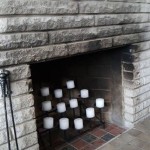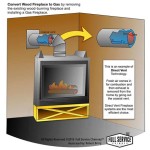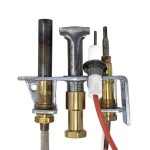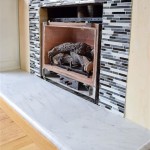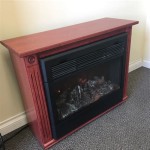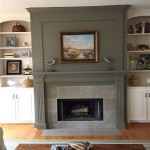The Enduring Appeal of Fireplace Stone Surrounds
Fireplace stone surrounds have been a prominent feature in homes for centuries, evolving from purely functional elements to sophisticated design statements. Their enduring appeal lies in their ability to combine aesthetic beauty, durability, and a connection to natural materials. Understanding the different types of stone, design considerations, and installation requirements is crucial for homeowners seeking to incorporate this classic feature into their living spaces.
A fireplace surround serves multiple purposes. Primarily, it frames the firebox, providing a visual anchor within a room. This framing enhances the overall aesthetic appeal, transforming a simple fire source into a focal point. Beyond aesthetics, the surround acts as a protective barrier, shielding combustible materials like drywall and wood framing from the intense heat radiating from the fireplace. The material choice also influences the perceived style, ranging from rustic to contemporary.
The Diverse Landscape of Stone Options
The selection of stone for a fireplace surround is vast, each type possessing unique characteristics in terms of appearance, durability, and cost. Natural stone options abound, including granite, marble, limestone, slate, and fieldstone. Manufactured stone veneers offer an alternative, providing a similar aesthetic at a lower cost and with easier installation.
Granite, known for its hardness and resistance to heat and scratches, presents a sophisticated and durable option. Its crystalline structure provides a range of colors and patterns, from subtle grains to bold veining. Marble, a metamorphic rock prized for its elegance and smooth texture, offers a luxurious feel. However, marble is more porous than granite and susceptible to staining, requiring careful sealing and maintenance.
Limestone, a sedimentary rock, offers a more natural and earthy aesthetic. Its softer texture lends itself well to carving and intricate detailing. Slate, a fine-grained metamorphic rock, is known for its distinctive layered appearance and resistance to water. Its dark, muted tones create a dramatic and contemporary look.
Fieldstone, typically sourced from local quarries or even directly from the homeowner's property, provides a rugged and rustic charm. Its irregular shapes and varied colors create a unique and textured surface. However, working with fieldstone can be more challenging due to its uneven sizes and shapes, requiring skilled craftsmanship.
Manufactured stone veneer, also known as cultured stone, is a manufactured product designed to replicate the look and feel of natural stone. It is typically made from a blend of cement, aggregates, and pigments. Manufactured stone offers several advantages, including lower cost, lighter weight, and easier installation. It is also available in a wide range of styles and colors, mimicking various types of natural stone.
The choice of stone depends on several factors, including budget, desired aesthetic, and the overall style of the home. Natural stone generally commands a higher price point but offers unparalleled durability and a unique, natural beauty. Manufactured stone veneer provides a more budget-friendly option with similar visual appeal and ease of installation.
Design Considerations for a Fireplace Stone Surround
Designing a fireplace stone surround involves careful consideration of several factors, including the size and style of the fireplace, the architectural style of the room, and the desired aesthetic. The size of the surround should be proportional to the size of the fireplace and the room. A small surround in a large room may feel underwhelming, while an oversized surround in a small room can feel overwhelming.
The style of the surround should complement the architectural style of the room. For example, a rustic fieldstone surround may be well-suited for a log cabin or a country-style home, while a sleek marble surround may be more appropriate for a modern or contemporary home. The color and texture of the stone should also be considered in relation to the existing décor. A neutral-toned stone can blend seamlessly with various color schemes, while a bolder colored stone can create a striking focal point.
The design of the surround can also incorporate various architectural elements, such as mantels, hearths, and corbels. A mantel provides a decorative shelf above the fireplace, offering a space for displaying artwork, photographs, or other decorative items. A hearth extends outward from the fireplace, providing a non-combustible surface for placing firewood or other fireplace accessories. Corbels are decorative brackets that can be used to support the mantel or add visual interest to the surround.
The overall design should also consider the functionality of the fireplace. The surround should be designed to properly vent smoke and gases, and it should be constructed of non-combustible materials. The surround should also be easily cleaned and maintained.
Integrating the fireplace surround into the existing room design is crucial. Consider the surrounding furniture, paint colors, and flooring. The fireplace should complement these elements, creating a cohesive and harmonious space. Lighting also plays a significant role. Strategically placed lights can highlight the texture and color of the stone, enhancing its visual impact. Recessed lighting, sconces, or even spotlights can be used to create a warm and inviting ambiance.
Installation and Maintenance of Stone Surrounds
Proper installation is paramount to the longevity and safety of a fireplace stone surround. Whether using natural stone or manufactured veneer, adhering to building codes and manufacturer guidelines is essential. Installation typically involves preparing the substrate, applying a mortar base, and carefully setting the stones in place. The mortar should be specifically formulated for use with stone, ensuring a strong and durable bond.
For natural stone, cutting and shaping the stones to fit the desired design may be necessary. This often requires specialized tools and skills. Manufactured stone veneers are typically easier to cut and install, as they are designed to be modular and uniform in size.
Grouting is an important step in the installation process, filling the gaps between the stones to create a waterproof and aesthetically pleasing finish. The grout color should be chosen to complement the stone color, and the grout lines should be consistently spaced and uniform in width.
Once installed, regular maintenance is necessary to keep the stone surround looking its best. This includes cleaning the stone regularly to remove dust, dirt, and soot. The type of cleaning solution used will depend on the type of stone. For example, acidic cleaners should be avoided on marble and limestone, as they can etch the surface. A pH-neutral cleaner is generally safe for most types of stone.
Sealing the stone is also recommended, especially for porous stones like marble and limestone. Sealing helps to protect the stone from staining and water damage. The frequency of sealing will depend on the type of stone and the level of use. A penetrating sealer is generally recommended, as it soaks into the stone and provides long-lasting protection.
Inspecting the surround regularly for cracks or damage is also important. Any cracks or damage should be repaired promptly to prevent further deterioration. Mortar joints should also be inspected and repaired as needed. If the surround is exposed to extreme temperatures, it may be necessary to re-point the mortar joints periodically.
Proper fireplace maintenance is also crucial. Regular chimney sweeps and inspections can prevent soot buildup and potential fire hazards. Ensuring the fireplace is properly ventilated and that the damper is functioning correctly will also contribute to the longevity of the stone surround and the overall safety of the home.
Professional installation is highly recommended, particularly for complex designs or when working with natural stone. Experienced installers possess the knowledge and skills necessary to ensure a safe, durable, and aesthetically pleasing result. Their expertise can prevent costly mistakes and ensure the long-term performance of the fireplace stone surround.

Fireplaces Eldorado Stone

Stone Fireplace Surround Ideas You Ll Love Columbia Mo

Verona Cast Stone Fireplace Surround Oregon Castings And Design

11 Stone Veneer Fireplace Surround Design Trends Where To Buy

Natural Stacked Stone Veneer Fireplace Ideas

Newport Cast Stone Fireplace Surround Oregon Castings And Design

Stone Fireplaces

Verona Cast Stone Fireplace Surround Surrounds

How To Pick The Best Stone For Fireplaces Stoneworx

Easy L And Stick Stone Fireplace Surround Sondra Lyn At Home
Related Posts

